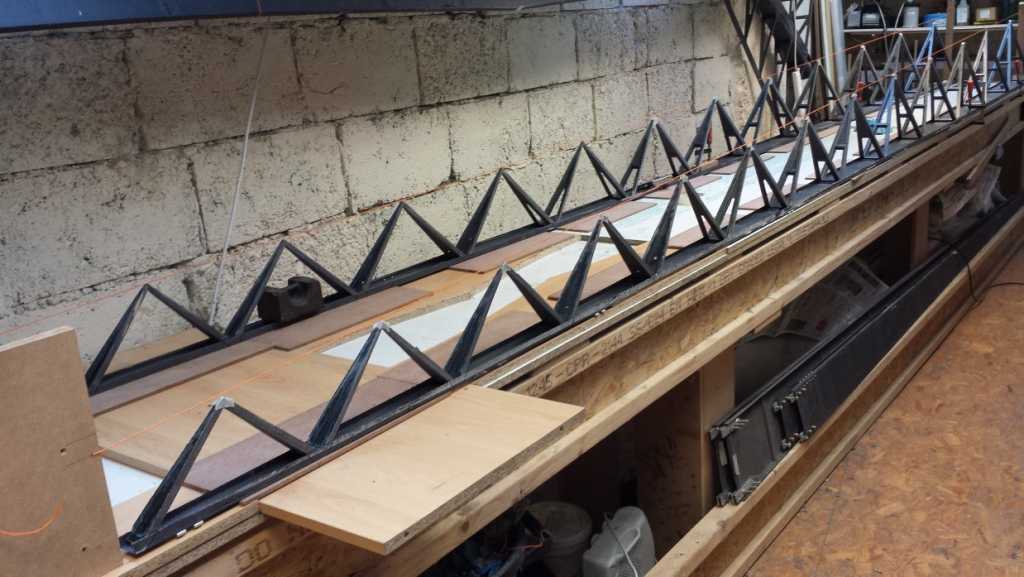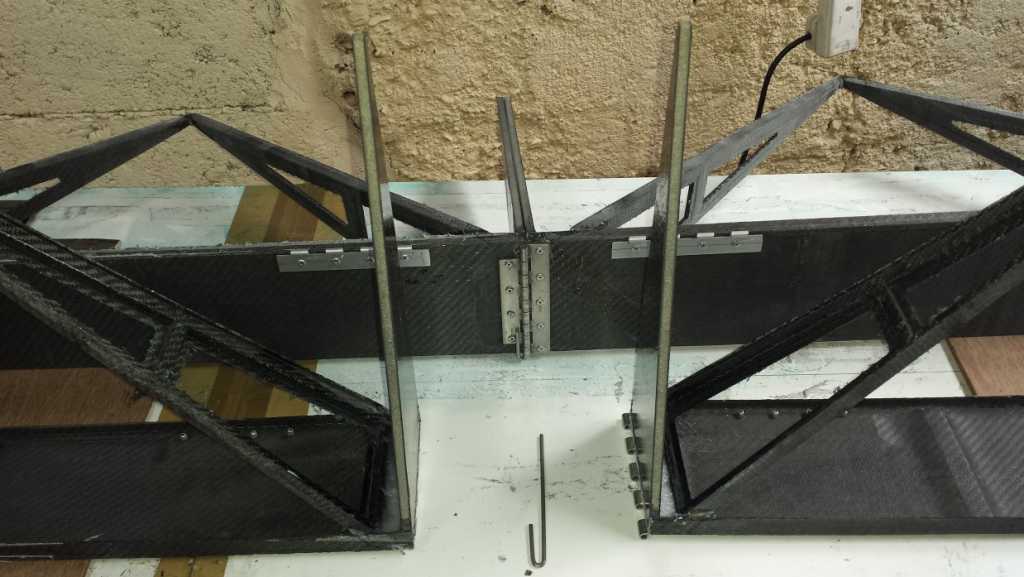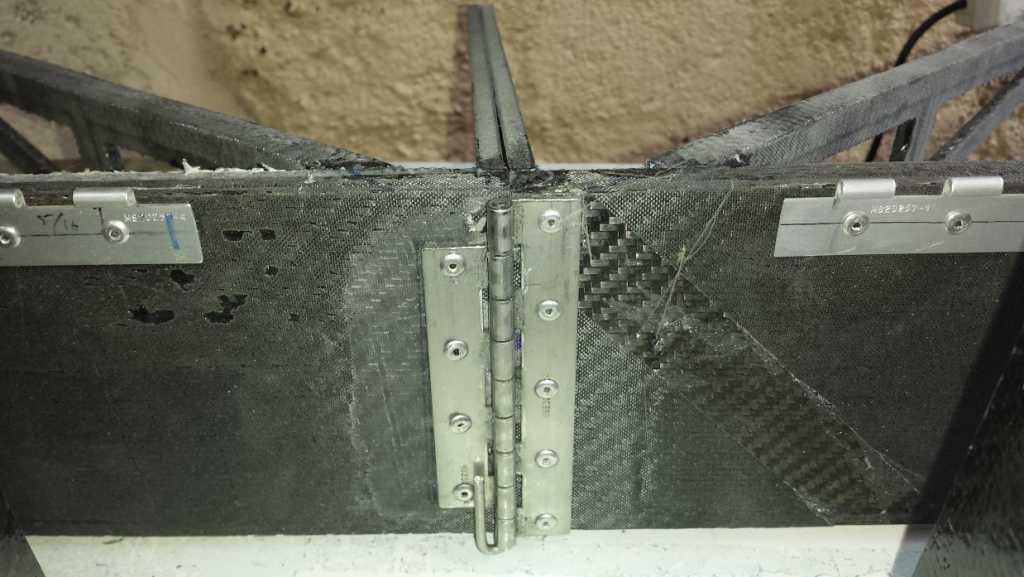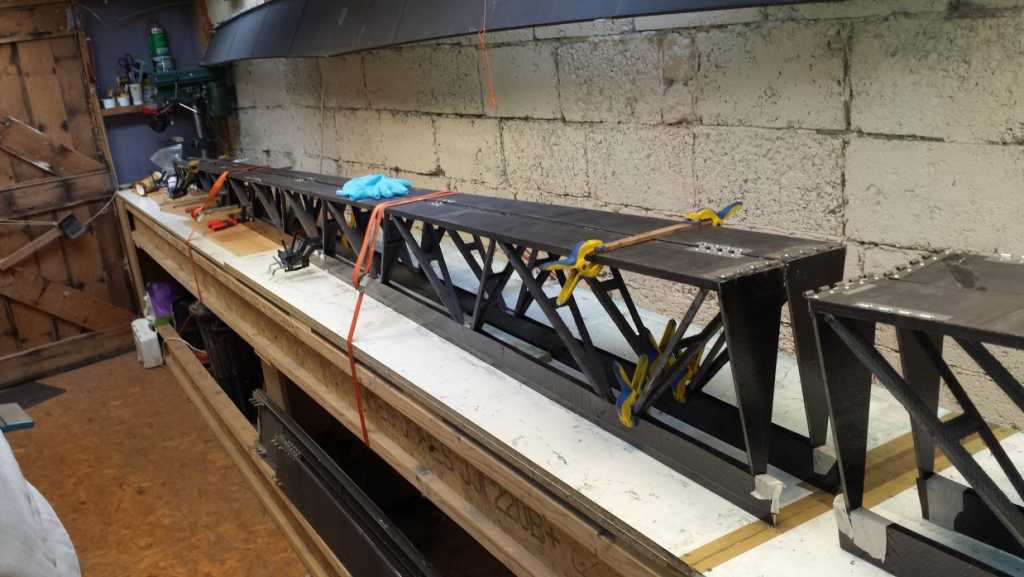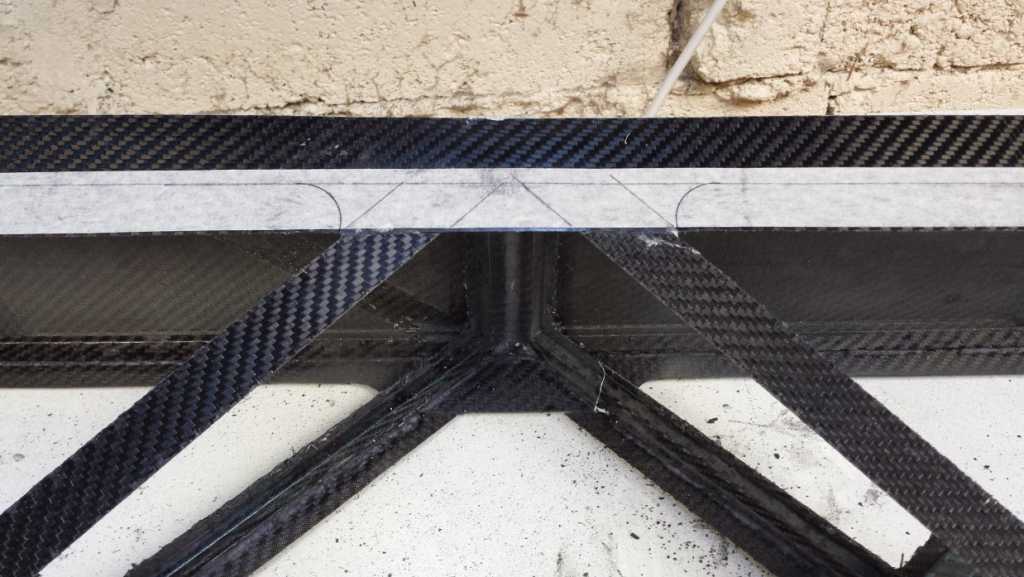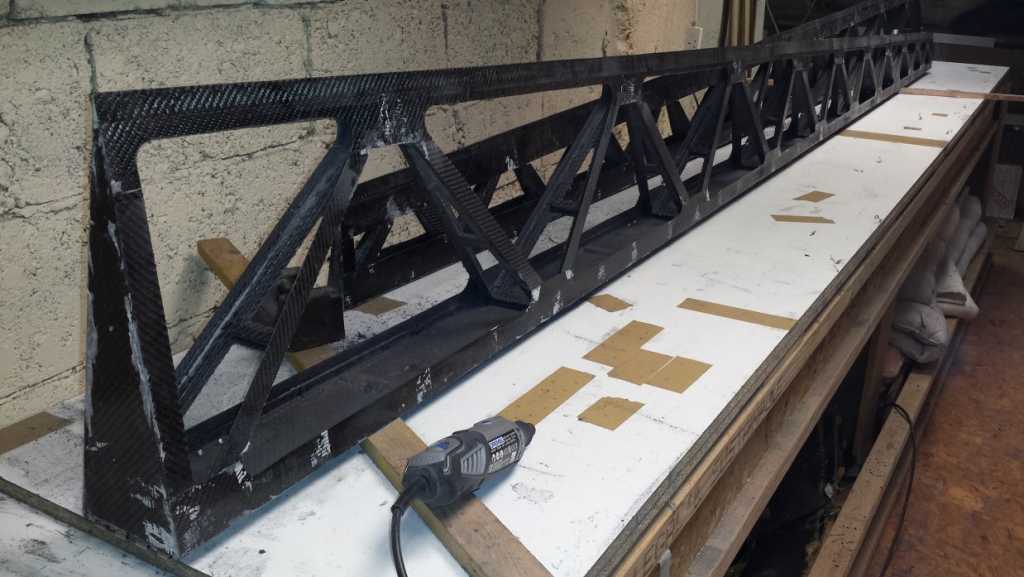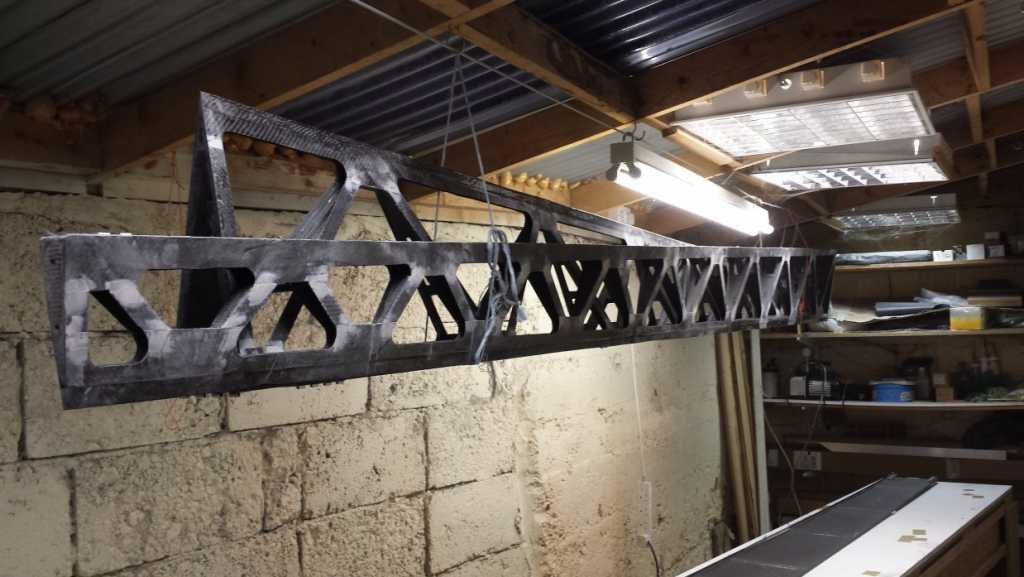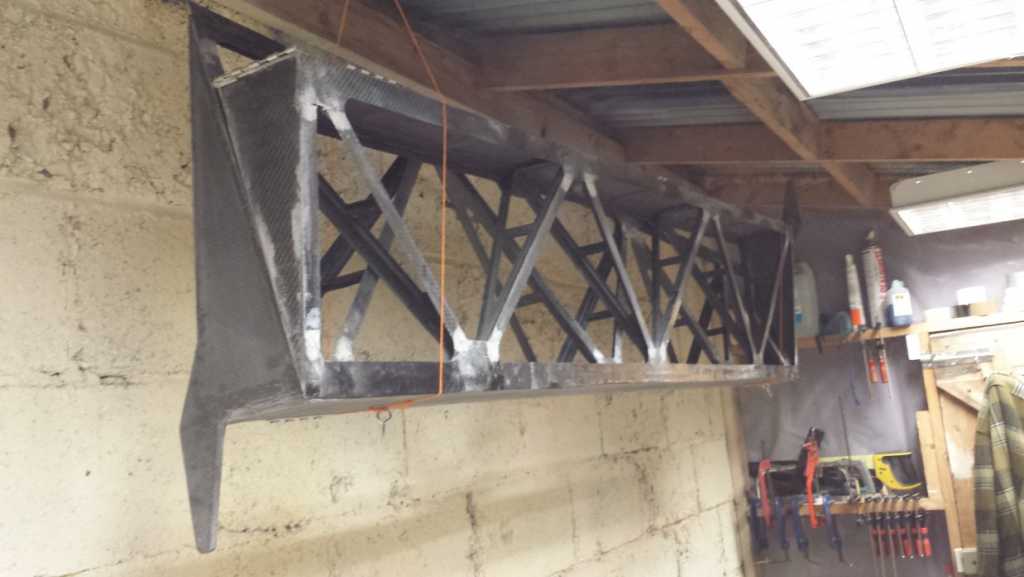Hi Val,
The four sections of flaperon weigh in at:
Left: 1642g + 2278g = 3920g = 8lbs 10oz
Right: 1711g + 2340g = 4051g = 8lbs 15oz (difference ~131g)
I don't know how that compares against the original wooden flaperons (Jim Maupin doesn't go into that much detail in his notes) but I expect mine are a little heavier.
My tail and rudder turned out lighter than the original wooden ones, and my tail boom should be at least 2.5lbs lighter, which is a problem as the Carbon Dragon (as built to the plans) requires extra weight at the tail to get the glider to balance correctly... so mine is going to need even more extra weight back there!
My solution to that problem was to fully cover my horizontal stabiliser with a carbon/kevlar skin... which certainly worked! The weight of the original H-stab + elevator is given as 8lbs in Jim Maupin's notes. Mine worked out as follows:
Horizontal Stabiliser: 3950g = 8lbs 11oz
Elevator: 1580g = 3lbs 8oz
Total: 5530g = 12lbs 3oz
This is almost certainly too heavy! However, I can trim out some of the composite skin between the ribs and cover with Dacron as usual.
You can find my tail-boom weights and strengths calculations here:
carbon-dragon.ihpa.ie/index.php/cd-build...rdner-s-cd#tail-boom
Phil.
